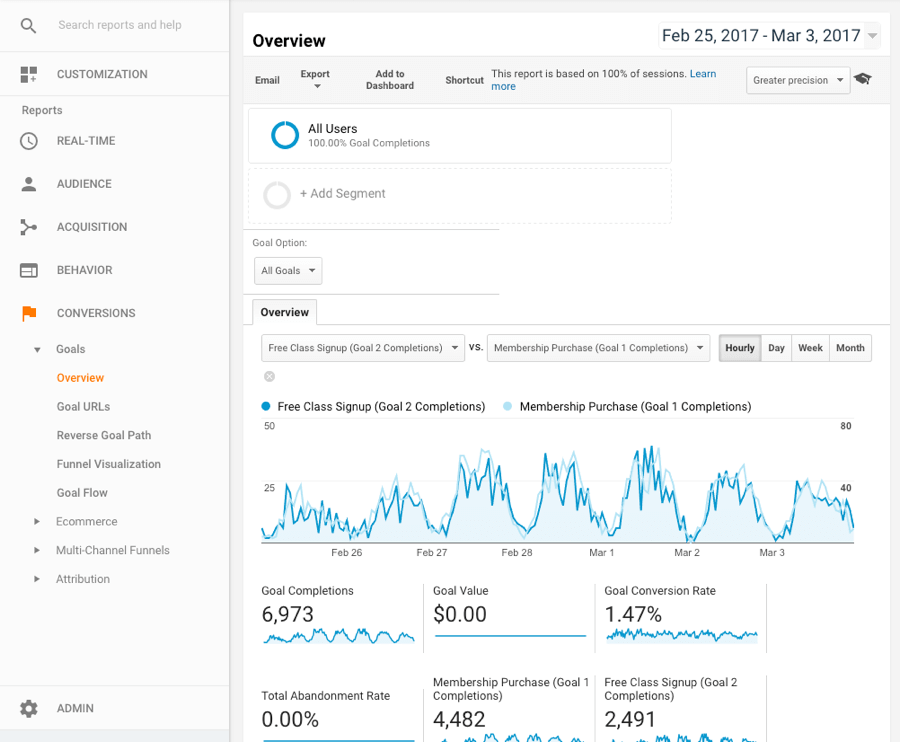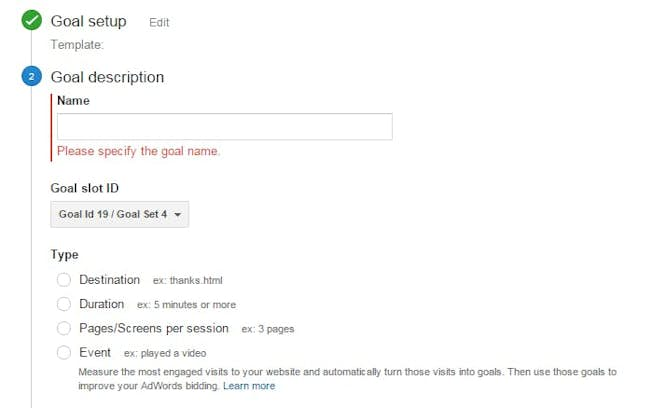What Data Is Google Analytics Goals Unable to Track: Important Details
Wiki Article
Introducing the Blind Spots: Understanding What Google Analytics Goals Can not Determine
In the realm of digital analytics, Google Analytics stands as an effective device for monitoring and analyzing on-line customer communications. In the middle of its durable capacities, there exist blind areas that commonly escape dimension. what data is google analytics goals unable to track. Recognizing what Google Analytics objectives can not determine is important for getting an extensive view of user behavior and engagement. As we explore the ins and outs of these blind places, we reveal an intricate internet of uncharted territories that hold valuable understandings right into individual actions and motivations, tough standard wisdom and shedding light on the limitations of our data-driven understanding.Individual Behavior on External Operatings Systems
Comprehending how customers communicate on external platforms is essential for maximizing on the internet strategies. Exterior platforms, such as social media networks, recommendation websites, and online forums, play a significant function in driving website traffic to a company's internet site. By examining user habits on these systems, businesses can obtain important understandings right into the efficiency of their advertising and marketing efforts and the preferences of their target audience.One secret facet of customer behavior on outside systems is the recommendation source. By tracking where the customers are coming from, organizations can identify which systems are driving one of the most traffic to their internet site. This details can help companies designate their sources better, concentrating on the platforms that yield the finest outcomes.

Offline Interactions and conversions
Evaluating individual behavior on outside systems supplies valuable insights into online strategies; nevertheless, thinking about offline conversions and interactions is similarly imperative for a comprehensive understanding of a company's overall efficiency. While Google Analytics succeeds at tracking on-line interactions, it drops brief in catching the total customer journey that frequently consists of offline touchpoints. Offline conversions, such as in-store purchases or phone inquiries, play a significant role in several organizations' success. Neglecting these communications can cause a distorted view of the performance of advertising and marketing campaigns and overall organization performance.
Attribution Beyond Last Click
When delving into the realm of digital advertising and marketing analytics, it becomes important to look beyond the single touchpoint of the last click for a much more thorough understanding of attribution. While Google Analytics gives Look At This valuable insights into individual actions, counting entirely on last-click acknowledgment can be restricting - what data is google analytics goals unable to track. Acknowledgment models that exceed the last click use an extra nuanced sight of the consumer trip, considering all the touchpoints that bring about a conversionAttribution beyond the last click enables online marketers to designate credit to numerous interactions along the conversion path, offering a more clear photo of the efficiency of different advertising channels. By discovering multi-touch attribution models such as linear, time degeneration, or position-based acknowledgment, services can better allocate their marketing budgets and optimize their approaches for optimal effect.
Understanding the impact of each touchpoint in the conversion procedure is important for making notified choices and optimizing ROI. By accepting attribution past the last click, services can gain much deeper understandings into consumer habits and tailor their advertising and marketing initiatives better.
Cross-Device and Cross-Browser Tracking

In a similar way, cross-browser monitoring Bonuses complements cross-device monitoring by capturing customer behavior as they switch between different web internet browsers. Understanding exactly how individuals engage with internet sites on various web browsers can aid online marketers enhance their on the internet experiences to make certain consistency and performance throughout various platforms.
Qualitative Data and User Intent
Comprehending individual intent via my explanation qualitative data evaluation is crucial for creating targeted electronic marketing methods that resonate with the needs and preferences of the target market. Qualitative information provides understandings into the 'why' behind individual activities, shedding light on inspirations, emotions, and choices that quantitative information alone can not catch. By analyzing individual responses, remarks, and interactions, marketers can reveal important info regarding customer intent, enabling them to tailor their messaging, web content, and offerings to much better straighten with what their target market is looking for.Qualitative information likewise aids in recognizing the context in which users involve with a website or application. This contextual understanding makes it possible for marketers to create more pertinent and tailored experiences, eventually driving higher involvement and conversion prices. By diving into customer intent with qualitative data evaluation, companies can gain a much deeper understanding of their target market, resulting in much more effective advertising techniques that fulfill individuals' requirements and expectations.
Verdict
In final thought, Google Analytics objectives have restrictions in gauging individual behavior on exterior systems, offline conversions, acknowledgment past last click, cross-browser and cross-device tracking, and qualitative data connected to user intent. what data is google analytics goals unable to track. It is essential for services to be knowledgeable about these blind areas in order to supplement their information analysis with other devices and methods to obtain a more detailed understanding of their target market and improve their general electronic advertising approachesBy assessing individual habits on these platforms, services can obtain important understandings right into the effectiveness of their advertising initiatives and the choices of their target audience.
Analyzing individual habits on exterior systems provides useful understandings into on-line strategies; nevertheless, taking into consideration offline conversions and interactions is equally crucial for a comprehensive understanding of a company's general performance.In digital advertising analytics, relocating past last-click acknowledgment to check out cross-device and cross-browser tracking is essential for gaining a holistic understanding of individual interactions across various platforms and tools. By analyzing user feedback, remarks, and communications, marketers can uncover important information about user intent, allowing them to customize their messaging, web content, and offerings to much better line up with what their audience is looking for.
By diving into user intent through qualitative information evaluation, organizations can get a much deeper understanding of their target audience, leading to much more effective advertising strategies that meet customers' expectations and demands.
Report this wiki page